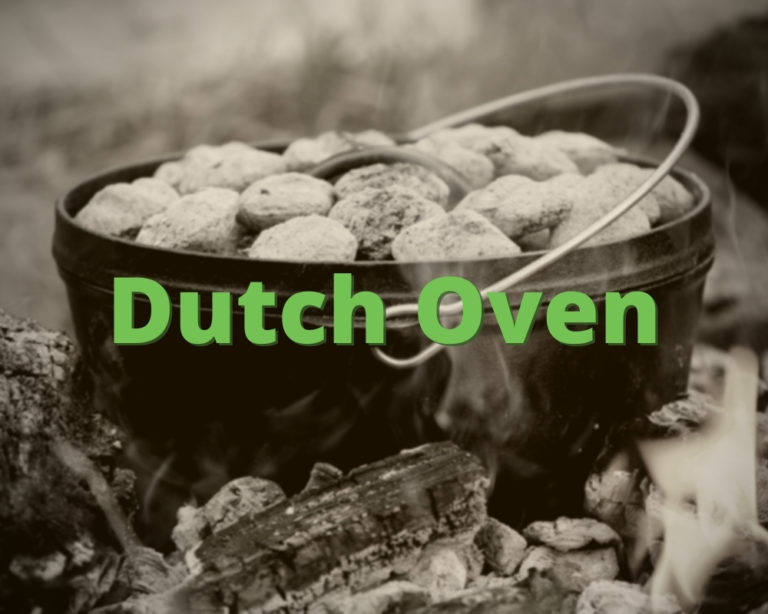So, you've probably heard the phrase "dutch oven" floating around in cooking circles or maybe even in some slang contexts. But what exactly is it? Is it just a fancy pot, or does it have a deeper meaning? Stick around, because we’re about to dive deep into the world of dutch ovens—both the literal kitchen tool and its quirky slang usage.
Let’s be real here—when you hear "dutch oven," your mind might wander to some weird historical reference or maybe even a joke your grandpa told you. But nope, this isn’t about baking bread in a literal oven made by the Dutch. Instead, we’re talking about a versatile cooking tool that’s been around for centuries and has recently gained popularity in modern kitchens.
Whether you’re a seasoned chef or just someone who likes to whip up a cozy stew on a rainy day, understanding what a dutch oven is—and why it’s such a big deal—can change your cooking game forever. And if you’ve stumbled upon its slang meaning, well, we’ve got you covered there too. So grab a cup of coffee, and let’s get started!
Read also:November 1 Zodiac Sign Discover The Traits And Secrets Of Scorpio
What Exactly is a Dutch Oven?
Alright, let’s break it down. A dutch oven is basically a heavy, lidded cooking pot that’s designed to retain heat and moisture. It’s often made from materials like cast iron or enameled cast iron, which makes it perfect for slow-cooking, roasting, and even baking. Think of it as the ultimate multitasker in your kitchen arsenal.
But why is it called a "dutch oven," you ask? Well, the name dates back to the 17th century when a Dutch metalworker named Abraham Darby revolutionized the way these pots were made. His method of casting iron pots with sand molds became the standard, and the name stuck ever since.
Nowadays, dutch ovens come in all shapes and sizes, but the core idea remains the same: a sturdy, reliable pot that can handle just about anything you throw at it. From soups and stews to bread and braises, this little guy is a kitchen essential.
Why Are Dutch Ovens So Popular?
Here’s the deal—dutch ovens are more than just a fancy pot. They’re practically a one-stop-shop for all your cooking needs. Here are a few reasons why they’ve become so beloved:
- Even Heat Distribution: The thick walls and heavy lid of a dutch oven ensure that heat is distributed evenly, which is perfect for slow-cooking and braising.
- Versatility: You can use it on the stovetop, in the oven, or even over an open flame. Talk about flexibility!
- Durability: Cast iron is built to last, so your dutch oven can be passed down through generations if you take good care of it.
- Moisture Retention: The tight-fitting lid traps steam, keeping your food moist and flavorful.
And let’s not forget the aesthetic appeal. A well-seasoned cast iron dutch oven sitting on your stovetop is like a piece of art in its own right.
The Slang Meaning of "Dutch Oven"
Now, let’s talk about the elephant in the room—or should I say, the pot in the kitchen? In some circles, "dutch oven" has taken on a whole new meaning. No, it’s not about cooking. Instead, it’s a playful term used to describe a prank where someone covers another person with a blanket and farts on them. Yeah, you read that right.
Read also:Sarah Rose Karr Today The Inspiring Journey Of A Modernday Legend
This slang usage is thought to have originated from the idea of trapping heat and moisture, much like a real dutch oven does. While it’s definitely not something you’d want to experience firsthand, it’s a fun little tidbit that adds some humor to the term.
Choosing the Right Dutch Oven
Not all dutch ovens are created equal, so it’s important to choose one that fits your cooking style and needs. Here are a few things to consider:
- Material: Cast iron is the classic choice, but enameled cast iron is easier to maintain and comes in a variety of colors.
- Size: A 5- to 7-quart dutch oven is versatile enough for most recipes, but if you’re cooking for a crowd, you might want to go bigger.
- Weight: Cast iron is heavy, so if you’re not into lugging around a 10-pound pot, consider a lighter option.
- Price: Budget-friendly options are available, but investing in a high-quality dutch oven can save you money in the long run.
Whatever you choose, make sure it’s something you’ll love using for years to come. After all, a good dutch oven is an investment in your cooking future.
How to Use a Dutch Oven
Now that you’ve got your dutch oven, it’s time to put it to work. Here are a few tips to get you started:
1. Seasoning: If you’ve gone the cast iron route, seasoning is key. Coat the inside with a thin layer of oil and bake it in the oven to create a natural non-stick surface.
2. Preheating: Always preheat your dutch oven before adding food. This ensures even cooking and prevents sticking.
3. Cleaning: Avoid using soap on your cast iron dutch oven. Instead, scrub it with hot water and a stiff brush, then dry it thoroughly to prevent rust.
4. Experimenting: Don’t be afraid to try new recipes! From chili to lasagna, the possibilities are endless.
Common Myths About Dutch Ovens
There’s a lot of misinformation out there about dutch ovens, so let’s clear up a few common myths:
Myth 1: Dutch Ovens Are Only for Slow Cooking
Wrong! While they’re great for slow-cooking, dutch ovens can also be used for searing, frying, and even baking. Think of it as your Swiss Army knife of cookware.
Myth 2: Cast Iron is Too Difficult to Maintain
Sure, cast iron requires a bit more care than other materials, but with proper seasoning and cleaning, it’s not as daunting as it seems. Plus, the results are worth it.
Myth 3: Dutch Ovens Are Only for Professional Chefs
Not true! Anyone can use a dutch oven, whether you’re a beginner or a seasoned pro. It’s all about finding the right size and material for your needs.
Top Brands for Dutch Ovens
When it comes to buying a dutch oven, there are plenty of great brands to choose from. Here are a few of our favorites:
- Le Creuset: Known for their vibrant enameled cast iron dutch ovens, Le Creuset is a favorite among chefs and home cooks alike.
- Staub: These french-made dutch ovens are designed with a self-basting system that keeps food moist and flavorful.
- Lodge: A classic American brand, Lodge offers affordable, high-quality cast iron dutch ovens that are perfect for beginners.
- Finex: With their sleek design and even heat distribution, Finex dutch ovens are a great option for modern kitchens.
Do your research and pick a brand that aligns with your budget and cooking style.
Recipes to Try in Your Dutch Oven
Ready to put your new dutch oven to the test? Here are a few recipes to get you started:
1. Beef Stew
There’s nothing quite like a hearty beef stew cooked in a dutch oven. Brown the meat, sauté the veggies, and let it simmer for a few hours. You’ll be rewarded with a rich, flavorful dish that’s perfect for cold winter nights.
2. Bread
Yes, you can bake bread in a dutch oven! The trapped steam creates a crispy crust and a soft, chewy interior. Try making a classic sourdough or experiment with different flavors.
3. Chicken and Dumplings
This comforting dish is a breeze in a dutch oven. Sear the chicken, add your veggies, and drop in some dumplings for a one-pot meal that’s sure to please.
Tips for Maintaining Your Dutch Oven
Proper maintenance is key to keeping your dutch oven in top condition. Here are a few tips:
- Season Regularly: If you’re using cast iron, re-season your dutch oven periodically to maintain its non-stick surface.
- Avoid Abrasive Cleaners: Stick to hot water and a stiff brush for cleaning. Avoid using soap, as it can strip away the seasoning.
- Store Properly: Keep your dutch oven in a dry place to prevent rust. Consider using a silicone lid keeper to protect the enamel.
With a little care, your dutch oven can last a lifetime.
Conclusion: Why Every Kitchen Needs a Dutch Oven
So there you have it—the ultimate guide to dutch ovens. Whether you’re using it to whip up a delicious stew or just having fun with its slang meaning, a dutch oven is a versatile tool that belongs in every kitchen.
Remember, the key to great cooking is experimentation. Don’t be afraid to try new recipes and techniques. And if you’re ever in doubt, just think about how Abe Darby would’ve done it!
Now that you know all about dutch ovens, why not share your thoughts in the comments? Or better yet, try out a recipe and let us know how it turned out. Happy cooking, and may your kitchen adventures be as flavorful as your food!
Table of Contents
- What Exactly is a Dutch Oven?
- Why Are Dutch Ovens So Popular?
- The Slang Meaning of "Dutch Oven"
- Choosing the Right Dutch Oven
- How to Use a Dutch Oven
- Common Myths About Dutch Ovens
- Top Brands for Dutch Ovens
- Recipes to Try in Your Dutch Oven
- Tips for Maintaining Your Dutch Oven
- Conclusion: Why Every Kitchen Needs a Dutch Oven


